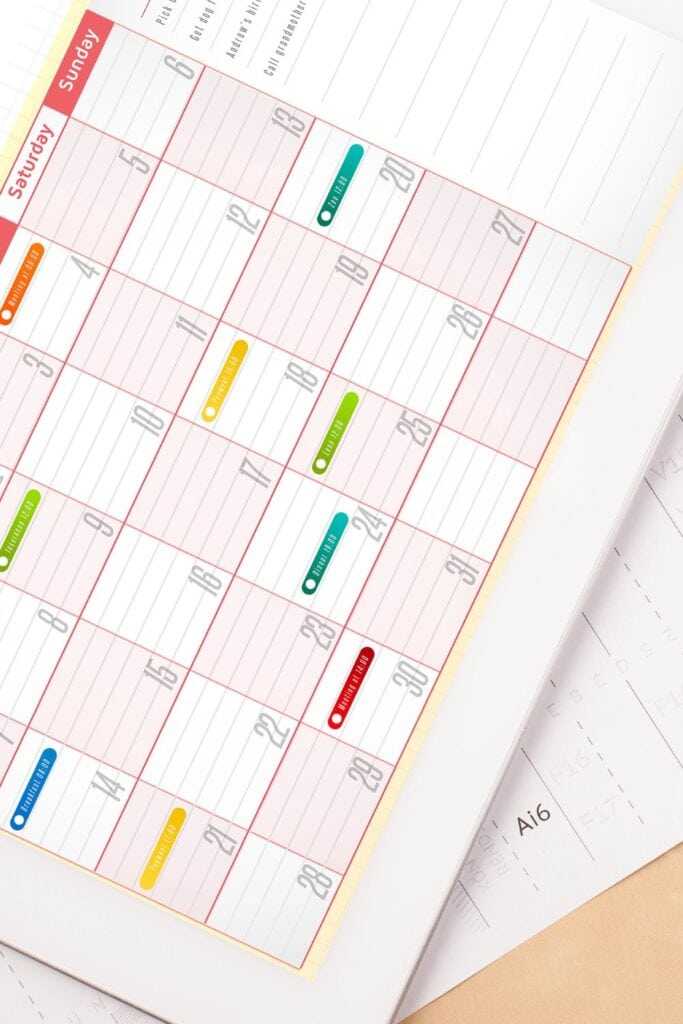7 Must-Know Homeschool Tips for a Smooth Year
Discover 7 homeschool tips for a smooth back-to-homeschool transition, including bedtime routines, organized learning spaces, and healthy meal planning. Set your family up for a successful and stress-free school year with these practical strategies.
We love the relaxation of summer, but we tend to forget our routines. Our bedtime gets later as the days get longer. And the later our bedtime, the later we sleep in.

This past summer we spent lots of time in our pool, took some short family trips, and did our best to enjoy family time. But now that it’s time to get back into our homeschool routine, it’s a struggle!
I know that having schedules and routines is important in homeschool, but it can be hard to transition from fun back into work.
As the summer days start to wane and the first signs of fall creep in, homeschool families everywhere begin to feel that familiar mix of excitement and a little bit of overwhelm.
While the flexibility of homeschooling is one of its greatest blessings, getting back into the groove can still be a challenge.
Whether you’re a homeschooling veteran or just starting out, here are seven practical tips to help you and your children transition smoothly into the new school year.
7 Homeschool Tips and Tricks You Need to Know
It’s easy to get overwhelmed when it comes to having a homeschool routine. But if you start slow and be intentional, you’ll soon naturally slide into helpful routines.
These 7 homeschooling tips will help you create a routine that works for your family and makes transitioning from summer to school easy-peasy!

1. Set Up a Consistent Bedtime Routine
One of the biggest challenges of getting back to homeschool is re-establishing a consistent bedtime routine.
During the summer, bedtimes tend to slide as everyone enjoys the longer days and relaxed schedules. Over the summer months, our 9:00 bedtime slowly became 10:00, 10:30–or even later.
However, a good night’s sleep is crucial for a kid’s focus and overall well-being. Plus, you’ll notice a huge difference in their attitudes when they’re running short on sleep!
Start by gradually adjusting bedtimes a week or two before school starts. Create a calming bedtime routine that might include a warm bath, reading a favorite book, and spending a few moments in prayer together.
Consistency is key, so aim to keep the routine the same each night. This helps signal to your child that it’s time to wind down and prepare for sleep.

2. Organize School Supplies and Learning Spaces
A clutter-free, well-organized space can do wonders for your child’s concentration and productivity. Before the school year kicks off, take some time to declutter and organize your homeschool area.
If you’ve been homeschooling for even a year or two, you know that papers and junk have a tendency to really pile up! Half-used books, art projects, spelling papers and more overflow their designated areas and end up everywhere.
Start by sorting through your school supplies—pens, notebooks, art materials, and any other essentials.
Store them in labeled bins or containers so that everything has its place. Check your state requirements for the paperwork or records you need to keep.
Organize them in a way that makes sense for you and throw away the rest.
Even if you’re working with limited space, you need a place where your child can focus without distractions. We homeschool at our kitchen island, and I’ve found that it’s much easier to get our schoolwork done when we keep our clutter to a minimum.
Don’t forget to organize your own materials, too! Keep lesson plans, educational resources, and your homeschool calendar easily accessible to avoid last-minute scrambles.
3. Plan and Prep Healthy Lunches
With the hustle and bustle of homeschooling, lunchtime can easily become an afterthought. However, fueling your children with nutritious meals will help them stay energized and focused throughout the day.
Take some time each week to plan and prep lunches ahead of time. Consider simple, balanced meals that include a variety of food groups.
I was raised on a steady diet of Lunchables, frozen pizzas, and peanut butter and jelly sandwiches. Those still make great choices for my kids, although I sometimes fancy it up a little.
Bento-style lunch boxes are a great option, allowing you to include in a little bit of everything—proteins, fruits, veggies, and grains. They’re easy to customize, plus you can prep several at once so kids can self-serve throughout the week.
Since you’re at home, leftovers are always a great choice. You can pop them in the microwave and lunch is ready in just a minute or two.

4. Create a Flexible yet Structured Schedule
One of the beauties of homeschooling is the flexibility it offers, but that doesn’t mean structure isn’t important.
Children thrive on routine, and having a daily schedule can help them know what to expect and stay on task.
Create a homeschool schedule that balances structured learning time with breaks and free play.
This might include blocks of time for core subjects, hands-on activities, outdoor play, and quiet reading. Remember to be flexible; some days will go as planned, while others might require adjustments.
Consider using a visual schedule or checklist that your children can see and follow along with. This gives them a sense of responsibility and ownership over their day.
Remember, one of the great things about homeschooling is that you have the ability to be as flexible as you choose. If you’re struggling with math today, take a break and go outside or switch to a different subject.
5. Ease Into the Curriculum
The first few weeks back to homeschool don’t need to be full-throttle. Give yourself and your kids grace as you ease into the curriculum. Start with lighter workloads and gradually build up to full days.
Use this time to review what your children learned last year, and introduce new concepts at a pace that feels comfortable for them. The goal is to rekindle their love of learning, not to overwhelm them with information.
You might also want to include some fun, hands-on projects or field trips during the first few weeks to keep things exciting.
This can help your children transition back into learning mode without feeling like they’re diving headfirst into the deep end.
Make sure to include lots of books. Let your kids help choose so that everyone is invested in the experience. We took a trip to a local bookstore before the school year started, and our boys picked out several great ones that we’re excited to read over the next few months.
6. Incorporate Plenty of Breaks
While it’s important to establish a routine, it’s equally important to build in plenty of breaks throughout the day. Children, especially younger ones, have shorter attention spans and need opportunities to move, play, and recharge.
Incorporate short breaks between lessons for physical activity, such as a quick dance party, a nature walk, or some simple stretches.
These breaks help your children release energy, refocus, and return to their work with renewed concentration.
Sometimes my son likes to get up and pace around the house between math problems or paragraphs. At first this annoyed me–and I do sometimes have to make him sit still.
But I’ve also learned that being active is an important part of his learning process. So I try to embrace it!
Remember, learning doesn’t just happen at the desk. Many valuable lessons come from playing, exploring, and interacting with the world around them.

7. Prioritize Connection Over Perfection
In the whirlwind of preparing for a new school year, it’s easy to get caught up in striving for perfection—perfectly planned lessons, perfectly organized spaces, perfectly behaved children. But homeschooling is a journey, and like any journey, it will have its ups and downs.
Prioritize connection with your children over having everything “just right.” Take time each day to listen to their thoughts, feelings, and concerns about the new school year.
Spend quality time together outside of schoolwork, whether it’s through play, a shared hobby, or simply talking about your day.
When challenges arise, approach them with patience and grace, remembering that the heart of homeschooling is the relationships you’re building with your children.
Final Thoughts
The transition back to homeschool doesn’t have to be stressful. With a little planning, organization, and a lot of grace, you can create a smooth and joyful start to the school year.
Remember, each family’s homeschool journey is unique—find what works best for you and your children, and don’t be afraid to adjust as you go.
Here’s to a wonderful new school year filled with learning, growth, and precious memories!

